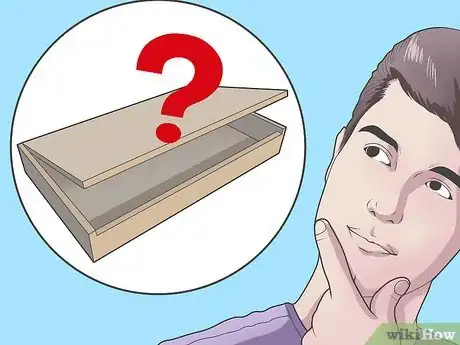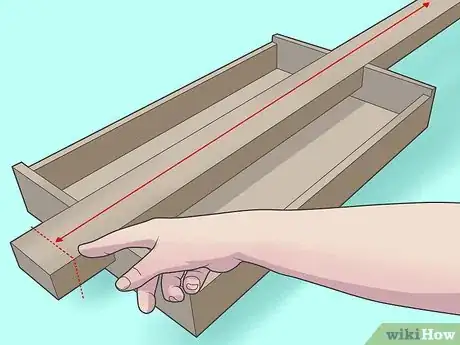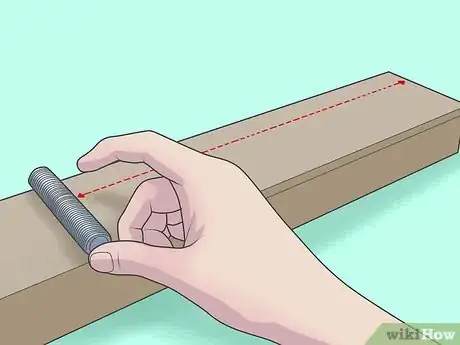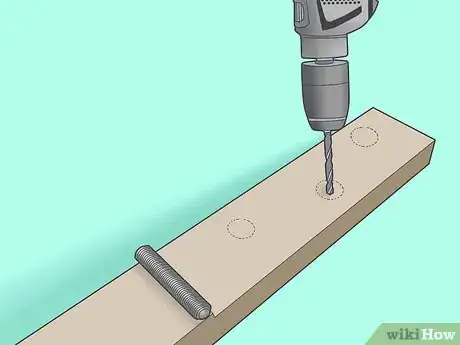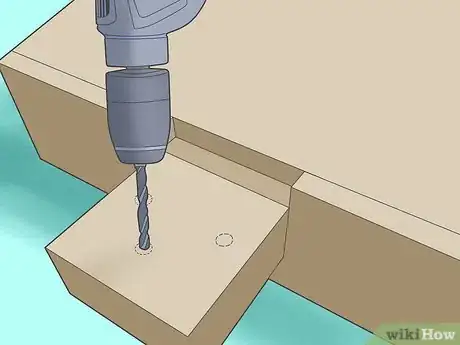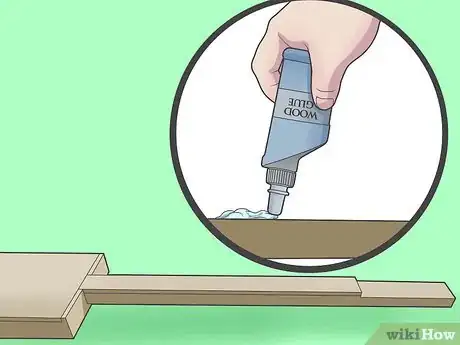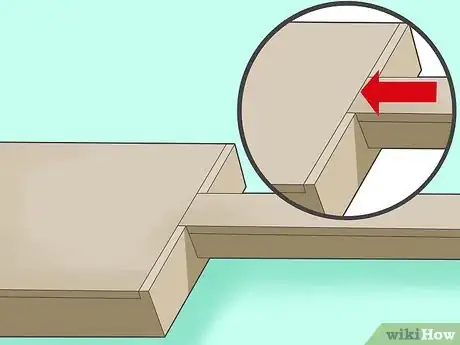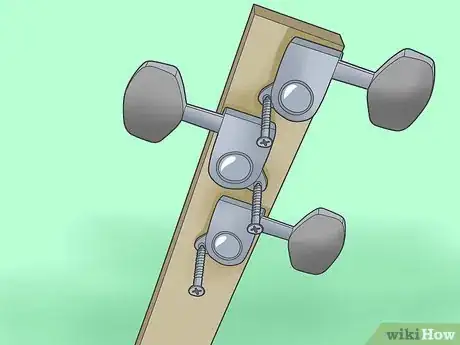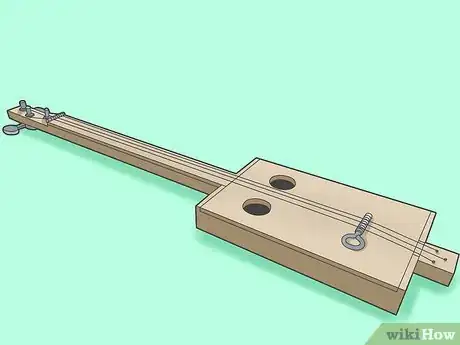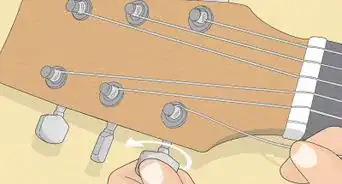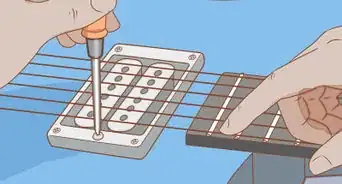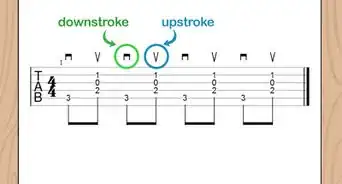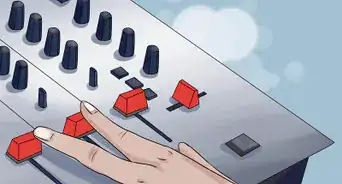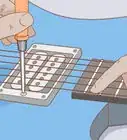wikiHow is a “wiki,” similar to Wikipedia, which means that many of our articles are co-written by multiple authors. To create this article, 20 people, some anonymous, worked to edit and improve it over time.
This article has been viewed 194,968 times.
Learn more...
Cigar box guitars are nothing new, but there has been a resurgence in the art of building and playing them. From the mid-1800s until the early 1900s, cigar box and home-built guitars have been made by budding musicians who generally came from poor rural areas. The blues are typically associated with these fascinating instruments. They have shown up in many areas of the US, mainly in the deep south to the Carolinas. Some have been seen as far north as Virginia and Pennsylvania as those who could not afford a proper guitar would make their own.
If you want to know more about the history of cigar box guitars, read "One Man's Trash: A History of the Cigar Box Guitar" by William J Jehle (self-published). Here's how you can make one.
Steps
-
1Gather your materials listed in this step. For a condensed version, go to the “Things You’ll Need” section.
- To start off with you will need of course a cigar box. Do not get a cigar box from a convenience store as they are thin and made of cardboard. Get one from a true tobacco/cigar store. Do not spend more than $3 for a paper-covered box and no more than $5 for a wooden box unless it is a specific box. Some places will give them away; however most will charge something. A box in the range of 9" wide, 7" deep and 1 1/2" thick is fine. Something along with a Maduro sized box. Anything much smaller and you will not be able to get a lot of sounds. Too big is not a problem but you will have to adjust the measurements of wood.
- We will be making what is called a neck trough design where the neck enters one side of the box and exits the other. This design allows for a strong neck and a place to terminate the strings on either end. You will need a length of wood as the neck. This article will show you how to use a standard 1x2 piece of wood (poplar or oak, do not use pine or fire) as a neck. The aforementioned 1x2 lumber is actually 3/4" x 1 1/2", and you must measure using these measurements. The piece should be 3 to 4 foot (0.9 to 1.2 m) long. You will also need standard guitar tuning pegs, a pack of 11 or 12 gauge strings, a piece of 1/4" X 1 1/2" bolt, and a 1/4" X 2 1/2" eye bolt. These will be the nut and bridge respectively. The nut is the piece closest to the guitar tuning pegs. You will also need a 1/4" x 1 1/2"x 2' piece of oak or poplar as the fingerboard.
- You will also need some basic tools such as a saw (basic hand saw and coping saw if you can get one), screwdriver, wood glue, hammer, drill and bits, wood file or rasp, sandpaper, rubber bands (as clamps) utility knife, ruler or yardstick, 1" deck screws are handy but you can use something similar. Be sure to have a sharpie or pencil and some painter’s tape (tape to mark on without marking on the box).
-
2Determine if you are going to make a left or right-handed guitar.
- A right-handed guitar has the neck oriented to the left. The tuning pegs will be on the left and the tail of the guitar will be on the right. A left-handed guitar will be the opposite. Measure and mark accordingly!
- Take the box and remove the lid by cutting it along the paper seam in the back. This will help you cut the box and position the neck without having the lid in the way. Looking at the box front on, find the center of the left and right sides, and mark it on the painter's tape. mark 3/4" from the center. This is where you will cut the box down for the neck. Mark on the outside of the left and right side 1" down. Cut these areas out of both ends of the box. The holes on each end should be 1 1/2" x 1".
Advertisement -
3Determine the scale of the instrument. The scale is the distance between the nut (tuning peg or head) end of the strings and the bridge. There are no rules as to length but 24" is a good start so we will use that.[1]
- Put neck stock in the box with about 1 1/2" sticking out the side and measure 3/4 the way into the box from where the tail end meets the box. This is where the bridge will be. Mark on the neck stock in pencil where the neck meets the outside of the box on each end. Do not worry that your neck seems deeper as the hole it sits in. It should be about 1/4" deeper. Adjust as needed.
-
4Mark the neck. Remove the neck stock and measure from the bridge mark out 24" along the neck. This point is where the nut will be. Remember the nut is where the strings end at the head end.
-
5Trim the head down. At the head end of the neck, you are going to make a series of cuts that will thin out the head so that you can apply the tuning pegs. You will need thin the head down to 5/8" from its 3/4" thickness. From the point where you have the mark for nuts, measure about 5 1/2" out on the neck and cut there. Measure 5/8" from the bottom of the neck in the head area and mark this the length of the head area on both sides.[2]
- You will need to remove the 1/8" to 3/16" from the top of the neck. Hold or clamp the neck in a vertical position and saw down the neck along the mark in the head area. Saw until you reach about 1/2" from where the nut will be. Cut this area out from the top. Don't worry if you didn't get it straight or if the cut was even. Using hand tools is difficult and you can always make a new neck later.
-
6Attach the tuning pegs. You will need to make a series of holes in the head area for the tuning pegs. Take two pegs that are for one side and one for the opposite side and arrange them on the neck so that they are not too close together (about 1/4" apart). Something like left-right-left or right-left-right. Mark where the holes should be and drill 3/8" holes in the head. Make sure the shaft of the tuning pegs are 3/8". If not, use the appropriate drill bit.[3]
-
7Mark the bridge position. Lay the neck in the box where you marked the outsides on the neck. Measure from the box edge to where the bridge mark is. Put the lid on and lay a piece of painters tape where the bridge should be using the same distance you just measured. Mark this point. This is where the eyebolt/bridge will be.
-
8Make the tail end holes. Remove the neck and on the tail end in the are that sticks out, drill three 1/8" holes roughly 3/8" apart. They can be closer or farther, but make sure the center one is centered to the neck. You can drill in any spot or shape you want (see example picture).
-
9Assemble the parts and glue or screw them down. Place the neck back in the box and replace the lid. You can glue the lid shut if you want. Use rubber bands or painters tape to hold the lid shut. You can screw the lid onto the neck if you want or you can glue it as well.[4]
-
10Make the fingerboard’s nut. Place the 1/4"x2" poplar strip on top of the neck so that it sits flush with the lid and mark it where the head was cut. Make sure it covers where the nut was marked. The nut will sit on top of the fingerboard.
- Once cut, glue it onto the neck by spreading the glue thinly on both the neck and the fingerboard using an old credit card or cardboard. Place them together, wipe off the excess glue, and clamp using rubber bands. Allow it to dry.
-
11Assemble the guitar. Once all the glue is dry, remove the tape from the lid and the rubber bands from the neck. Attach the guitar tuners using the screws provided. Glue the nut in place using a small amount of glue as well as the bridge. Use painters tape to hold them until dry.[5]
-
12Make the sound holes. Once all the parts are dry, remove the tape and cut two holes in the lid for the sound holes (see picture). The holes can be about 1" to 1 1/2". Try to center them as best as possible. Try using painters tape to mark where you want the center of the holes to be.
-
13Customize your guitar (optional). Here are a few suggestions.
- Paint or apply artwork to the box
- Add “fret marks” so you will know where the notes are
- Make a nut out of 1/16"x1/16" wood or Corian(tm). You can also make a different bridge.
- Install a piezo type pickup system.
- Angle the head back by cutting a scarf joint.
- Shape the back of the neck to more of a D-shape using a wood rasp or spoke shave.
- Apply grommets or metal drain hole covers as sound hole decorations.
Community Q&A
-
QuestionFor a three string model, what strings do I use with a G, D, G tuning medium strings?
 zackary dunnCommunity AnswerI've found a simple pack of custom light strings work, strings 3, 4, & 5 or G, D, & A respectively, and drop tune the A string to a G, it'll be your deepest note.
zackary dunnCommunity AnswerI've found a simple pack of custom light strings work, strings 3, 4, & 5 or G, D, & A respectively, and drop tune the A string to a G, it'll be your deepest note. -
QuestionHow do I get the bolts I need?
 Community AnswerYou should be able to buy the necessary bolts at either a hardware or mechanical engineering store near you. I would guess it would cost between $10 to $15 for the materials.
Community AnswerYou should be able to buy the necessary bolts at either a hardware or mechanical engineering store near you. I would guess it would cost between $10 to $15 for the materials. -
QuestionI have found cigar boxes hard to get localy but I do have a good collection of rectangular cookie tins. Can I use these instead?
 Gwen ChapmanCommunity AnswerThere are plenty of cigar box ukulele tutorials that use tin boxes instead of wooden ones. So yes, go ahead and make use of those tins instead!
Gwen ChapmanCommunity AnswerThere are plenty of cigar box ukulele tutorials that use tin boxes instead of wooden ones. So yes, go ahead and make use of those tins instead!
Warnings
- Beware! Some woods are hazardous when inhaled. Please know your woods and how to treat them.⧼thumbs_response⧽
- Don't use pine or fir. These woods are not strong and cannot hold up to the tensions of the strings.⧼thumbs_response⧽
- Use proper safety procedures. Tools can cut and power tools can cut quickly.⧼thumbs_response⧽
- Sand wood and use paints and solvents in well-ventilated areas.⧼thumbs_response⧽
Things You’ll Need
- Wooden cigar box somewhere in the 9"x7"x2" range (usually called cardboard but needs to have sides about 1/4" thick and not from a convenience store) (can be other sizes)
- 3' 1x2 wood stock for the neck (poplar or oak, not pine or other firs)
- 2' 1/4x2 oak or poplar strip for the fingerboard
- (2-4) 1" screws (sheetrock screws are good)
- 1/4" X 1 1/2" bolt
- 1/4" X 2 1/2" eyebolt
- Wood glue
- Sandpaper (wood, 120 to 220 grit)
- Standard guitar tuning pegs (3)
- Pack of acoustic guitar strings (11 to 13 gauge)
- Hand saw and/or coping saw
- Screwdriver and hammer
- Drill with various sized bits
- Utility knife
- Wood file or rasp, or some sort of chisel
- Rubber bands (to act as clamps)
- Ruler or yardstick
- Pencil
- Sharpie
- Painter’s tape (to mark on instead marking on the box)
References
- ↑ https://www.cigarboxguitar.com/knowledge-base/how-to-make-a-simple-cigar-box-guitar-metric-included/
- ↑ https://www.artofmanliness.com/articles/how-to-make-a-cigar-box-guitar/
- ↑ https://makezine.com/projects/make-21/cigar-box-guitar/
- ↑ https://makezine.com/projects/make-21/cigar-box-guitar/
- ↑ https://www.artofmanliness.com/articles/how-to-make-a-cigar-box-guitar/
- http://www.cigarboxnation.com
